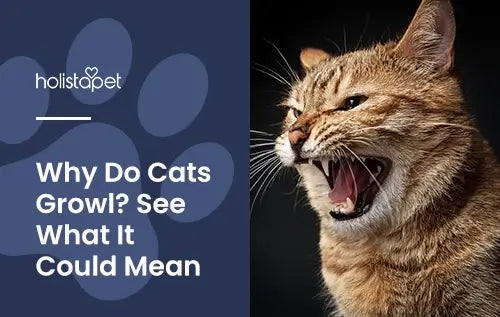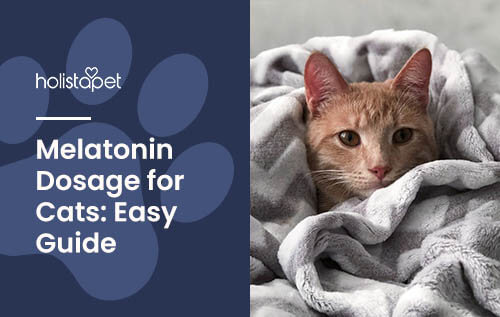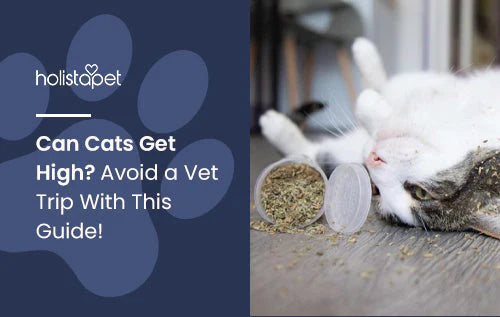Dogs growl and you understand that's normal; but you might be surprised to hear your cat growling, especially if it's at you for the first time. A cat growl can be sort of scary, so you may ask, "why is my cat growling?" Your cat will often have puffed up fur, a flicking tail, flattened ears, and a look to kill. Are they crazy? Are they going to attack? It's important to understand why your cat is growling and how you can stop them from continuing their aggression.
Why Do Cats Growl?
Whatever the situation, there are common reasons for cat growls. Feline vocal communication is one noticable area of your cat's body language, and most incidents can fall under one of these categories:

Offensive
If your cat wants to appear tough, they will possibly growl in hopes of intimidating cats or people that approach them. This is common when you have more than one cat. If a cat starts growling, back off. Don't stare at them or try to touch them, since they may mark you as perceived threat. This aggressive behavior means they are telling you they're in charge and you need to listen to them.
Pain or Illness
If you notice your cat growl and is hiding more than usual or eating less than normal, it could be a sign that it's sick or in pain. Below are some common ailments that might cause a cat to growl:
- Dental Disease
- Urinary Tract Infection (UTI)
- Arthritis
- Internal Injuries
- Digestive Issues
- Respiratory Infections
- Ear Infections
- Skin Conditions
- Neurological Issues
Warning
Once you start to understand cat behavior a bit more, you'll see that they don't suddenly lash out and try to scratch people. They often start with a warning growl or hiss. If you see a cat with their ears back, bristled fur, and a flicking tail, they are most likely letting you know they are mad, hurt, or scared.

Fear
Growling is not usually a sign of aggression for cats. They are usually just terrified or anxious. It can also be a sign they are annoyed. Cats who growl are often warning people to stop whatever they are doing, whether it's petting them in an uncomfortable manner, trying to pull them out of a hiding space, or playing with them when they want to be left alone.
Fighting
While cats usually opt to warn others and then escape when faced with a threat, cats can also attack if they feel it's necessary. A growling cat might also be swatting, scratching, hissing, and biting. If you notice your cat starting to growl and act agitated, don't further engage them. Calmly leave the situation, allowing them to calm down.
Resource Guarding
Some cats growl to protect their resources, such as food, toys, or resting spots. Resource guarding is a defensive behavior, especially common in multi-pet households where competition may arise over food bowls or favorite sleeping areas. Even some lone cats may show this behavior with humans if they feel their favorite toy or treat might be taken away.
Overstimulation
Cats have a threshold for how much physical interaction they can tolerate, and sometimes they growl when that limit is reached. This is known as overstimulation aggression. Signs like a flicking tail, flattened ears, or dilated pupils often accompany this type of growling. Cats are very sensitive to touch, and when the petting becomes too much for them, growling is a way to say, “Enough!”
Is Cat Growling Normal?
Cats are usually very deliberate in their behavior. Meowing, chirping, purring, yowling, growling, and hissing are all normal vocalizations for cats. Each behavior expresses a particular feeling to other cats and their human family members. It's very important to pay attention to what your cat is responding to since growling is often a defensive or angry behavior.
When is Growling Abnormal or Excessive?
If your cat is growling at things that normally don't make them upset — like petting them in a certain area or being aggressive when you approach them — you should immediately contact your veterinarian. Cats are experts at hiding their discomfort, meaning you will usually have to watch them closely to figure out the subtle signs.
If your cat doesn't usually hide, but now they are retreating under the bed and then growling when you go to check on them, that's a definite sign that your cat may be in pain, anxious, or suffering from a condition. Vets may be able to tell you how to deal with your cat's fears and anxieties. They may also provide certain treatment plans and prescriptions to help your cat better deal with these situations.
How to Approach a Growling Cat
First things first: do not approach a growling cat! Cats often growl as a warning for you and other house members (humans or pets) to stay away from them. If you are planning to approach a growling cat to bring them to the vet, there are a couple of ways you can go about this:
- Slowly approach your cat and then gently wrap them in a towel, burrito-style. Put them tail-first into a carrier and shut the door. They will untangle themselves from the towel.
- Scoop your cat up in a pillowcase when they aren't expecting it. Place them into the carrier while still inside the pillowcase.
- Give them calming treats, pheromone spray, catnip, and toys to settle them down before placing them in the carrier.
How to Calm and Relax a Growling Cat
If you feel like your cat is growling due to stress or pain, it's always the right thing to call a veterinarian and make an appointment. But meanwhile, you might want to give your cat some comfort to reduce their growling.
- Leave them alone: If you notice body language like hissing, baring teeth, tail flicking, and wide eyes, it's most likely best to leave your cat alone. They are probably warning you to back off.
- Don't pet them: While you might think petting them could calm your cat, it can come off as a threat to your cat.
- Provide them with CBD: CBD is a non-psychoactive cannabinoid. CBD interacts with your cat's endocannabinoid system (ECS), which may result in soothing and calming effects. Simply drop some in their food each day to ensure your feline feels balanced and more peaceful.
- Remove other pets from their territory: Sometimes their aggression may be due to a new pet's presence. It's possible you introduced them too fast. Your cat may feel threatened by the newcomer. Allow your cat to establish its territory while the new animal remains in a separate room.
- Never punish them: If your cat starts growling, don't spray them with water or yell at them. They won't understand that you want them to stop growling. Instead, they will only feel even more threatened and fearful. This will just make them act even more aggressive, scared, or defensive.
- Give them more comfort: If your cat is hiding or refusing to leave a certain spot, provide them with comfy bedding, their favorite toys, and maybe your own sock or hair tie to give them some comfort while they remain alone and unbothered.
Final Thoughts - Why Do Cats Growl?
Up until this point, you may be thinking, "can cats growl?" While cats can seem unpredictable and crazy, growling is actually their attempt to warn you that you need to back off before they go crazy. It is often your cat's response to feeling threatened, scared, or if they are in pain. If you suspect your cat is stressed or injured, contact a veterinarian immediately. For more information, take a look at these helpful cat guides.







![Probiotics For Dogs [Soft Chews] - HolistaPet](http://www.holistapet.com/cdn/shop/files/Probiotic-Infographic-1_472d7a29-e30c-435a-9638-1365d8c3a9f9.jpg?v=1725384841&width=104)


























Leave a comment
All comments are moderated before being published.
This site is protected by hCaptcha and the hCaptcha Privacy Policy and Terms of Service apply.